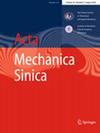Helmets exacerbate head injuries to some degree under blast load, which has been recently researched and referred to as the underwash effect. Various studies indicate that the underwash effect is attributed to either wave interaction or wave-structure interaction. Despite ongoing investigations, there is no consensus on the explanations and verification of proposed mechanisms. This study conducts experiments and numerical simulations to investigate the underwash effect, resulting from the interaction among blast load, helmets, and head models. The analysis of overpressure in experiments and simulations, with the developed simplified models that ignore unimportant geometric details, reveals that the underwash effect arises from the combined action of wave interaction and wave-structure interaction. Initially reflected in front of the head, the blast load converges at the rear after diffraction, forming a high-pressure zone. Decoupling the helmet components demonstrates that the pads alleviate rear overpressure through array hindrance of the load, resulting in a potential reduction of up to 36% in the rear overpressure peak. The helmet shell exacerbates the rear overpressure peak through geometric restriction of the load after diffraction, leading to a remarkable 388% increase in rear overpressure. The prevailing impact of the geometric restriction imposed by the shell of the helmet leads to a significant 57% increase in overpressure when employing a complete helmet.


